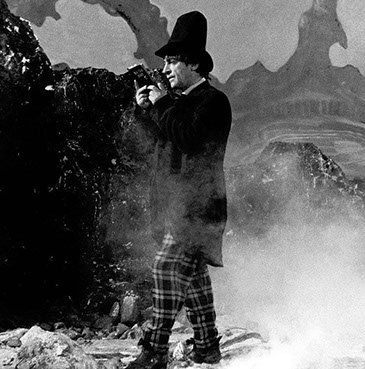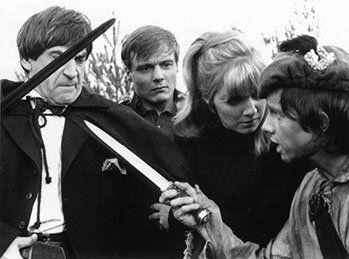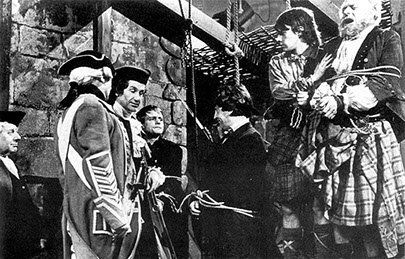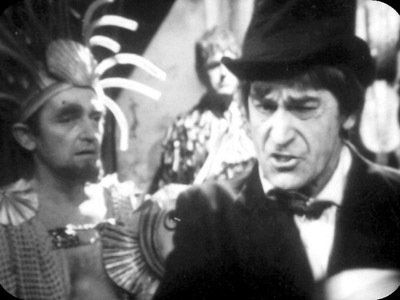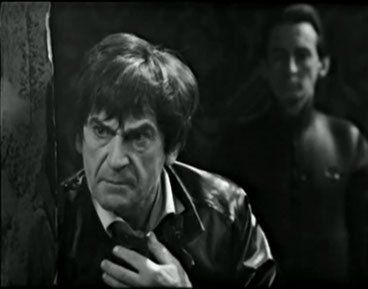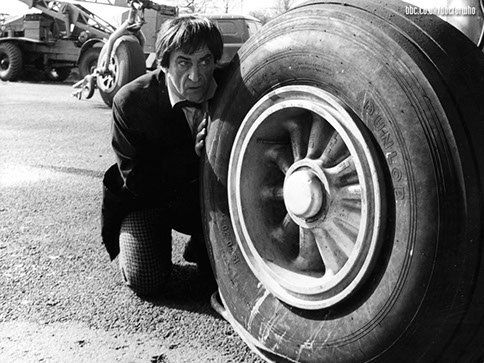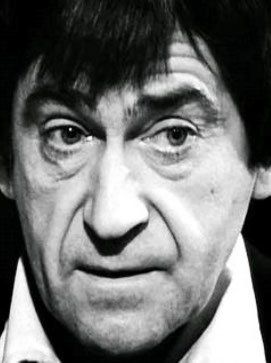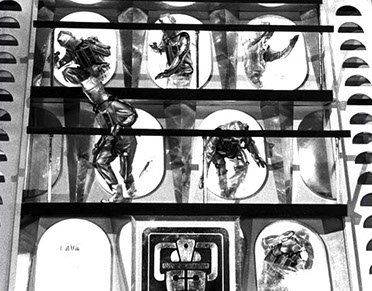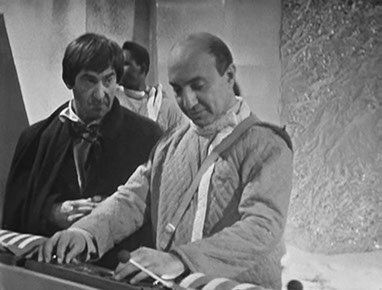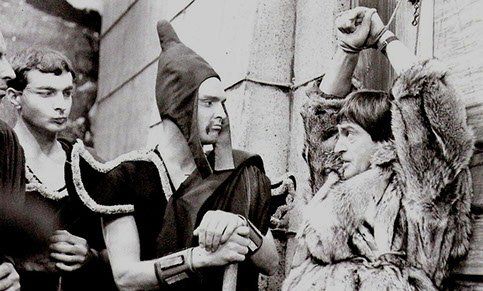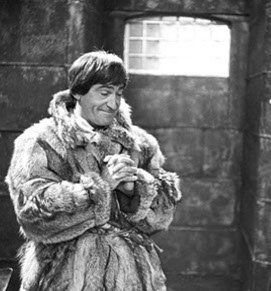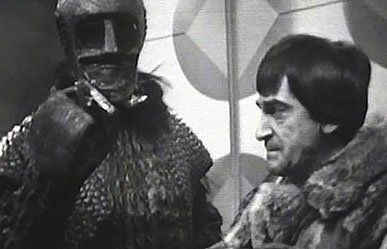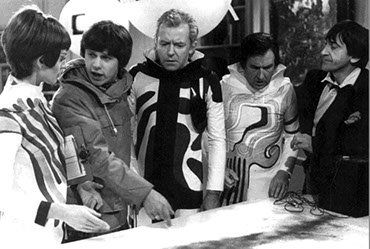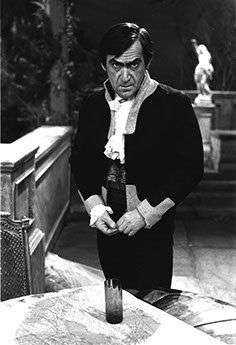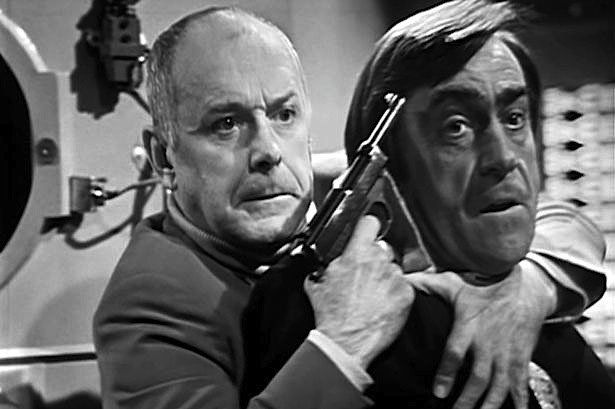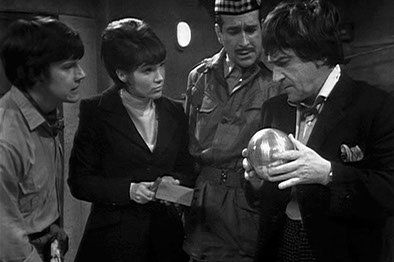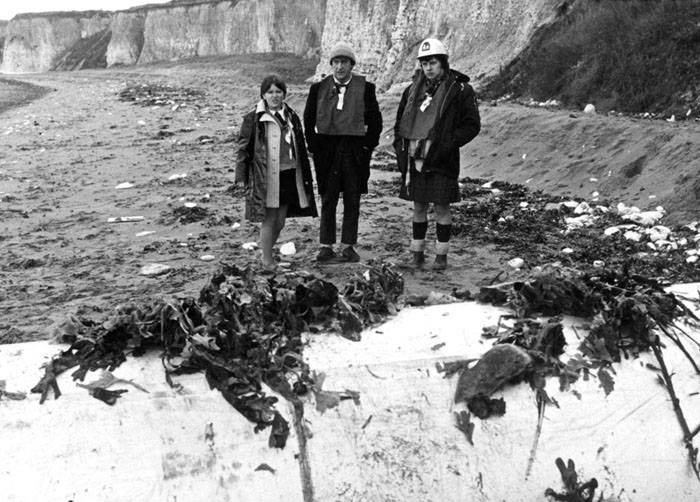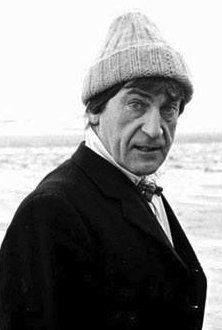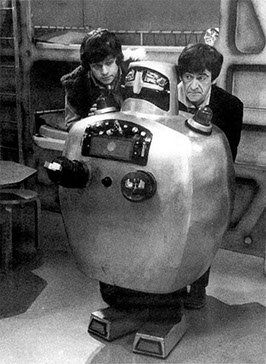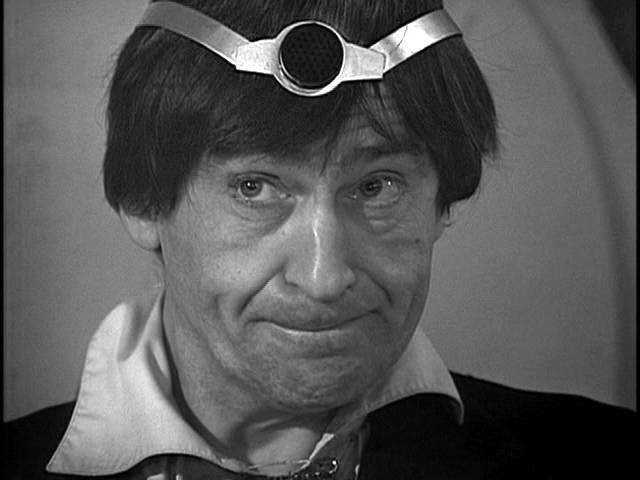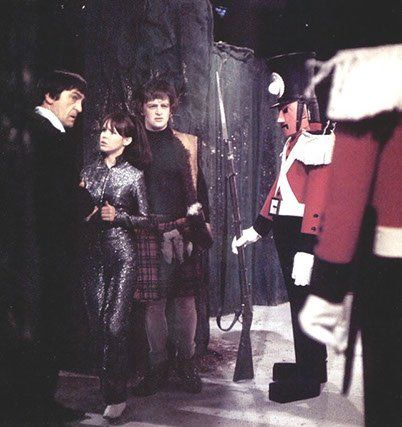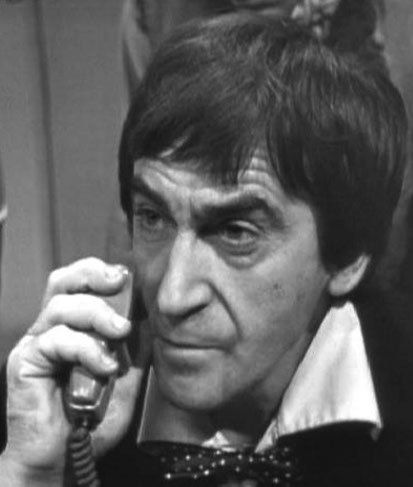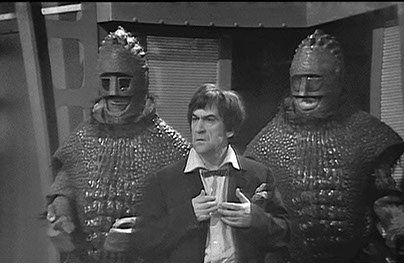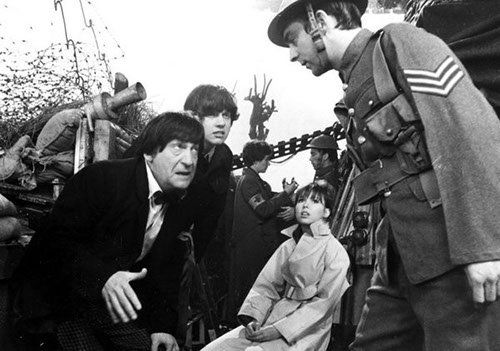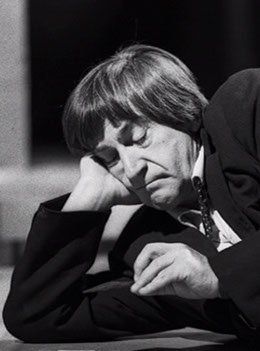The Dr Who Years
1966
The Power of the Daleks(TV)
Dr. WhoThe Power of the Daleks is the first full story to feature Patrick as the Second Doctor in the BBC science fiction TV series Doctor Who. Dad’s portrayal as the Doctor was brave, complex and departed absolutely from his predecessor, Bill Hartnell. It has been described as a clown or a ‘cosmic hobo’. It is neither of these. Only on the surface did he appeared to be a clown, tramp, hobo, drawing on child-like qualities, dressing in scruffy clothes, playing his recorder when all around him was in chaos, delving excitedly into a bag of jelly babies and acting the fool to confuse his dangerous enemies. This was just a veneer.
1966
The Highlanders(TV)
Dr. Who
Dr. Who
The Highlanders is Pat’s second story in the BBC science fiction TV series Doctor Who in which he and his companions Polly and Ben (Annek Wills and Michael Craze) meet some Scottish highlanders just after the Battle of Culloden in 1746. This story that lasted four episodes was the first appearance of Frazer Hines as companion-to-be Jamie McCrimmon. My father had initially read the first draft at the beginning of December under the title Culloden. He warmed to the swash-buckling style of the story that was loosely based on Robert Louis Stevenson’s Kidnapped. Pat had appeared in a good number of historical TV dramas during the Fifties and early Sixties.
1967
The Underwater Menace(TV)
Dr. Who
Dr. Who
The Underwater Menace is Patrick’s third story in the BBC science fiction television series Doctor Who, in which Jamie McCrimmon’s makes his first journey with the Doctor as a travelling companion. Working titles for this story include Doctor Who Under the Sea and The Fish People. The history of this script is particularly troubled. Dad had thought the idea of monsters in the shape of Fish People who had been created by medical experiment to serve as slaves was a very sound science-based story. His complaint was that there was clearly not enough budget to make the set and costumes convincing enough.
1967
The Moonbase(TV)
Dr. Who
Dr. Who
The Moonbase is the Patrick’s fouthstory of the BBC science fiction TV series Doctor Who, which features the return of the Cybermen. The first draft of the script was written before it was decided that Frazer Hines would be a regular cast member. As a result, the character of Jamie had to be worked into a script that didn’t have much room for him. Studio recording for The Moonbase began on February 4th 1967 and the first episode was transmitted a week later. Although he never admitted it, Dad must have been feeling the gruelling weekly schedule, which involved five days rehearsal, one studio-recording day, and then filming inserts every other Sunday.
1967
The Macra Terror(TV)
Dr. Who
Dr. Who
The Macra Terror is Patrick’s fifth serial in the BBC science fiction television series Doctor Who. The story focuses on the Doctor, Ben, Polly and Jamie unravelling a mystery on a human colony planet in the future, and introduces the alien race known as the Macra. The Macra Terror began rehearsals on 4th March 1967 and this time the production team made sure that they did not make the same mistakes as in The Underwater Menace. Although the budget was similarly modest, they were able to achieve a very scary crab-like alien through a combination of clever model construction, increased location filming and subtle lighting.
1967
The Faceless Ones(TV)
Dr. Who
The Faceless Ones is Patrick’s sixth serial of the BBC’s science fiction TV series Doctor Who in which a race of identity-stealing aliens known as the Chameleons come up against the Doctor. This is the last time we see Michael Craze and Anneke Wills as the Doctor’s companions Ben Jackson and Polly. They left after recording episode two of The Faceless Ones and with it a long Doctor Who partnership finally came to an end. My father was very sad to see Anneke and Mike leave the series since they had shared such good times together.
1967
The Evil of the Daleks(TV)
Dr. Who
The Evil of the Daleks is Patrick’s seventh story of the BBC’s science fictionTV series Doctor Who and marked the debut of Deborah Watling as the Doctor’s new companion, Victoria Waterfield. Trying to find the stolen TARDIS, Dad and Jamie are lured into a trap by the Doctor’s old enemies the Daleks. I still have part of the original script written by David Whitaker, which Dad had pinched for me on my first visit to the Who studio. My favourite scene will always be watching the ‘dizzy Daleks’ questioning commands from their black coloured superior.
1967
The Tomb of the Cybermen(TV)
Dr. Who
The Tomb of the Cybermen is the eighth story in the BBC science fiction TV series Doctor Who and features recurring villains the Cybermen, as well as the introduction of the Cyberman Controller and the Cybermats. I recall watching the first episode in early September from a completely different perspective. The story seemed far more menacing and real than others that had preceded it. I had been introduced to the evil Cybermen before in Moonbase but this time these emotionless, non-humanoid, purely logical beings from the planet Mondas seemed to me no longer just monsters but plausible sinister cybernetic creatures.
1967
The Abominable Snowmen(TV)
Dr. Who
Dr. Who
The Abominable Snowmen was Patrick’s ninth story in the BBC science fiction TV series Doctor Who and introduced the Robot Yeti and the Great Intelligence.
Mysterious forces are at work in 1930s Tibet. The once gentle Yeti have turned savage and besieged a Buddhist monastery. The Doctor, Jamie and Victoria arrive expecting a friendly welcome from the abbot, but soon become ensnared in the plans of the extradimensional being known as the Great Intelligence. The week of filming in Wales was a nightmare with persistent driving rain for three days and freezing cold howling northerly winds.
Mysterious forces are at work in 1930s Tibet. The once gentle Yeti have turned savage and besieged a Buddhist monastery. The Doctor, Jamie and Victoria arrive expecting a friendly welcome from the abbot, but soon become ensnared in the plans of the extradimensional being known as the Great Intelligence. The week of filming in Wales was a nightmare with persistent driving rain for three days and freezing cold howling northerly winds.
1967
The Ice Warriors(TV)
Dr. Who
Dr. Who
The Ice Warriors is Patrick’s tenth story of the BBC science fiction television series Doctor Who and marked the debut of the Ice Warriors. The TARDIS materilizes on Earth in a ice age. The Doctor, Jamie and Victoria meet scientists, commanded by Leader Clent who are using an ioniser device to combat the advance of a glacier. A giant humanoid creature, called an Ice Warrior has been uncovered by one of the scientists. When thawed, it revives and is revealed to be Varga, captain of a Martian spacecraft that landed on Earth centuries ago and is still in the glacier.
1968
Enemy of the World(TV)
Dr. Who
Dr. Who
The Enemy of the World was the eleventh story of the BBC science fiction television series Doctor Who and saw Patrick play both the lead protagonist and antagonist. It was the only story of that season which did not follow the monster format. The Doctor and his companions arrive on Earth in 2018 and are immediately drawn into a deadly web of intrigue thanks to his uncanny resemblance to the scientist/politician Salamander. The Doctor must expose Salamander’s evil schemes before he takes over the world. This unusual story was written by David Whitaker, produced by Innes Lloyd and directed by Barry Letts.
1968
The Web of Fear (TV)
Dr. Who
Dr. Who
The Web of Fear is Patrick’s twelfth story of the BBC science fiction TV series Doctor Who, which is a sequel to The Abominable Snowmen and marks the return of the Yeti, the Great Intelligence, and Professor Edward Travers. Episodes 2, 4, 5, and 6 were recovered from Nigeria in 2013, however, leaving only episode 3 missing. Douglas Camfield and my Dad continually praised the efforts of the set designer of Web of Fear. The whole scene looked and felt so authentic. Dad said he even thought he could feel ‘that familiar warm dry flow of musty air that continually blows in the real underground.’
1968
Fury from the Deep (TV)
Dr. Who
Dr. Who
Fury from the Deep is thirteenth serial of the BBC TV science fiction series Doctor Who, which marks the final appearance of Deborah Watling as Victoria Waterfield. The Doctor, Jamie and Victoria are taken prisoner by the staff of a gas refinery, who have lost contact with their drilling rigs and experienced mysterious drops in pressure. The filming took place on an old disused sea fort in the Thames Estuary. My father was terrified of heights and suffered severely from vertigo. Just standing on a chair would make all the blood drain from his face. He was very embarrassed by this problem and so kept it a secretwith only a few of his close friends and family knowing the truth.
1968
The Wheel in Space (TV)
Dr. Who
Dr. Who
The Wheel in Space is Patrick’s fourteenth story of the BBC science fiction television series Doctor Who and introduces Wendy Padbury as companion Zoe Heriot. The TARDIS materialises on board a spaceship, where the dad and Jamie are attacked by a servo robot. Jamie contacts a nearby space station known as the Wheel and they are rescued. However, the ship discharges Cybermats, which also travel to and enter the station. These pave the way for the invasion of the station by Cybermen, who intend to use its direct radio link with Earth as a beacon for their invasion fleet. The fifth season came to an end officially with the recording of episode six of The Wheel in Space on 12th April 1968.
1968
The Dominators (TV)
Dr. Who
Dr. Who
The Dominators is Patrick’s fifteenth story of the BBC science fiction TV series Doctor Who. The TARDIS arrives on the planet Dulkis where the Doctor, Zoe and Jamie encounter the Evil Dominators and their robotic slaves, The Quarks who plan to detonate a bomb in the planet’s core, which will turn the entire planet into a source of radioactive fuel for their invasion fleet. This was the last time I visited the studio and watched my father record Doctor Who. It was also the first and final appearance of the Quarks. A dispute over their ownership and licensing rights meant Haisman and Lincoln would never write for Doctor Who again. In 2018 I narrated the unabridged audio book for the BBC.
1968
The Mind Robber (TV)
Dr. Who
Dr. Who
The Mind Robber is Patrick’s sixteenth story of the BBC science fiction TV series Doctor Who and took him and his companions on a rare trip into pure fantasy of the Void, a realm outside space and time with riddles that your life depends on, a malevolent Medusa, eerie toy soldiers, giant storybooks that can erase you from reality, and allies in the form of Princess Rapunzel and Lemuel Gulliver himself. Patrick knew Peter Ling’s script was exactly the type of risky story that they should be attempting to keep Doctor Who fresh. He told Peter that he was very enthusiastic about The Mind Robber, which he described as, ‘bizarre, but totally in keeping with the ever changing style of Doctor Who.’
1987
The Invasion (TV)
Dr. Who
Dr. Who
The Invasion is Patrick’s seventeenth story of the BBC science fiction TV series Doctor Who, and marks the first appearance of UNIT with Brigadier Lethbridge-Stewart played by Nicholas Courtney. The first studio for The Invasion began on the 20th September and the suggestion of fewer episodes per season originally discussed between my father and Barry Letts was now implemented. This was an enormous relief to my father and Frazer since it meant pre-filming would no longer cut into important rehearsal time. They would also have the luxury of six weeks between taping and transmission to cover illness or production problems.
1968
The Krotons (TV)
Dr. Who
Dr. Who
The Krotons is Pat’s eighteenth story of the BBC science fiction television series Doctor Who written by long-time Who writer and script editor Robert Holmes. The TARDIS materializes on the planet of the Gonds, who are ruled by the alien Krotons — crystalline beings whose ship, the Dynatrope, crash-landed there thousands of years earlier after being damaged in a space battle. During the pre-filming in a chalk quarry near Malvern the robots proved unreliable and not very photogenic. My father spent most of the day out of breath not from the energetic escape sequences but from the uncontrollable fits of laughter and ‘Poor David Maloney.
1969
The Seeds of Death (TV)
Dr. Who
Dr. Who
The Seeds of Death is Pat’s nineteenth story of the BBC science fiction television series Doctor Who, with a second appearance of the Ice Warriors. The TARDIS lands in a space museum on Earth in the late 21st century. The Doctor and his companions travel to the Moon in a rocket and reach the Moonbase, control centre only to find a squad of Ice Warriors have commandeered the base and plan to use a T-Mat network of transporters to their advantage.
Dad does not appear in Episode 4 as he was on holiday when it was being recorded. A double stands in for him in some shots where the Doctor is seen unconscious on the floor.
Dad does not appear in Episode 4 as he was on holiday when it was being recorded. A double stands in for him in some shots where the Doctor is seen unconscious on the floor.
1969
The Space Pirates (TV)
Dr. Who
Dr. Who
The Space Pirates is Patrick’s twentieth serial of the BBC science fiction television series Doctor Who, which originally aired in six weekly parts from 8 March to 12 April 1969. This is the second story written by Robert Holmes, one of the show’s most successful scriptwriters, who would subsequently rise to become Script Editor on the show in the Tom Baker era. Space beacons are being destroyed by pirates, who are salvaging the argonite metal. When the Doctor, Jamie and Zoe arrive on one of the beacons, they are mistaken for pirates. This was the first studio on which John Nathan-Turner was employed by the Doctor Who.
1969
The War Games (TV)
Dr. Who
Dr. Who
The War Games is Patrick’s twentieth serial of the BBC science fiction television series Doctor Who, and the last regular appearance of Dad as the Second Doctor, and of Wendy Padbury and Frazer Hines as companions Zoe Heriot and Jamie McCrimmon. It was also the story where the Doctor’s race, the Time Lords, were revealed. The story centres around a planet on which many War Zones exist, overseen by the War Lords, who have kidnapped large numbers of human soldiers in order to create an army to conquer the galaxy. Infiltrating the control base, the Doctor discovers that the War Chief is also a Time Lord.


